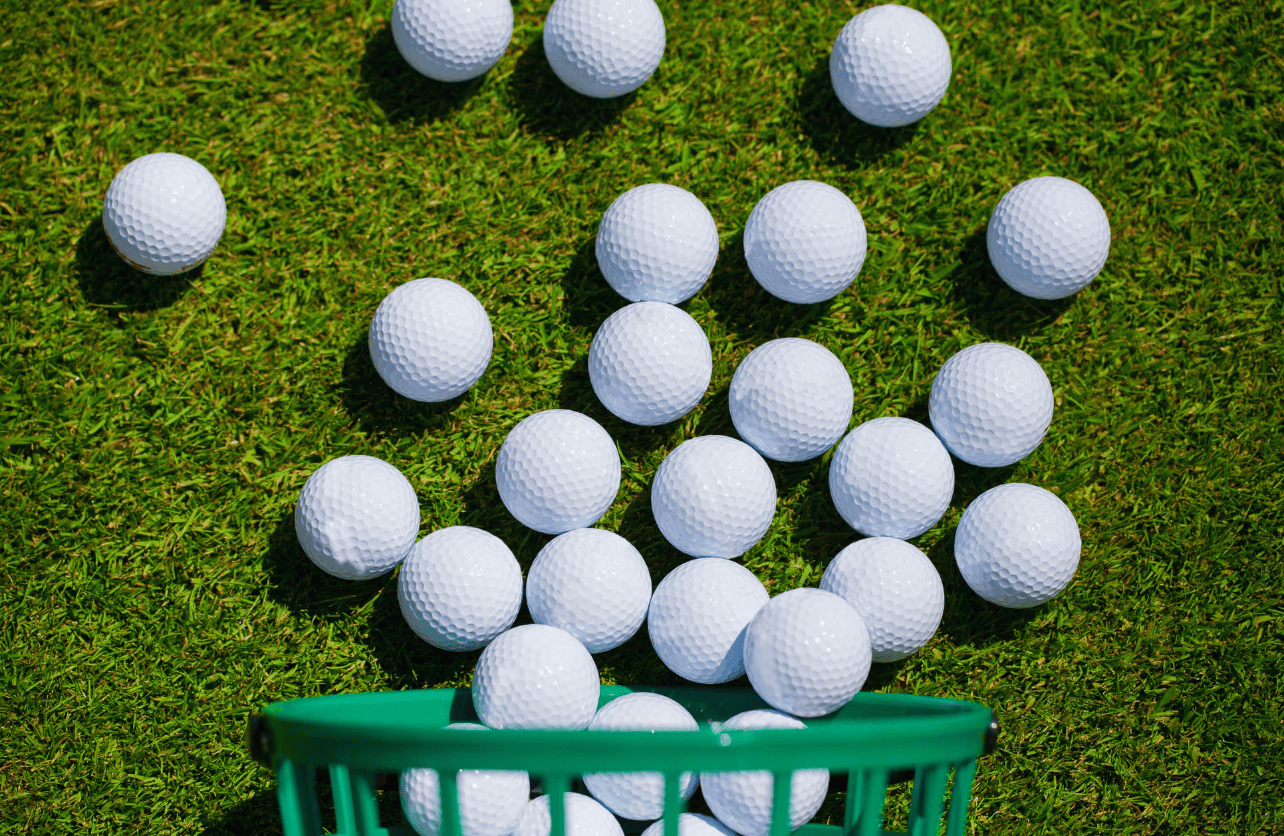What Golf Ball Should You Use?

Choosing the right golf ball isn’t just about picking the one that’s on sale or the one your favorite pro uses. It’s about finding the ball that matches your playing style, skill level, and performance goals. A golf ball can dramatically impact your distance, accuracy, spin, and feel—essentially every aspect of your game. But with so many options on the market, how do you know which one is right for you?
This guide will walk you through the key factors to consider when choosing a golf ball, from your skill level to your swing speed and even your budget. By the end, you’ll have a better understanding of what to look for and, more importantly, why it matters.
Assess Your Skill Level
Your skill level is one of the most crucial factors in choosing the right golf ball. Here’s how it breaks down:
Beginners and High-Handicap Golfers: If you’re just starting out or have a high handicap, you’ll want a ball that offers maximum forgiveness and distance. A two-piece construction is ideal because it’s designed for durability and reduced spin, which helps minimize the impact of mishits. These balls are typically less expensive, so losing a few during a round won’t hurt your wallet as much.
Recommended Features:
- Durable Cover: To withstand mishits and rough terrain
- Low Spin: Reduces side spin, minimizing slices and hooks
- High Launch: Easier to get in the air
Intermediate and Mid-Handicap Golfers: For those who have gained more control and consistency, a three-piece golf ball is a good option. These balls provide a balance between distance and control, allowing you to work the ball more effectively. The added layer provides increased spin and feel, especially around the greens.
Recommended Features:
- Balanced Spin and Distance – Enough spin for short game control without sacrificing distance
- Soft Feel – For better feedback and touch on short shots
- Durable Urethane or Surlyn Cover – To withstand regular play without excessive wear
Advanced and Low-Handicap Golfers: If you’re an experienced player with a low handicap, you’ll benefit from a four or five-piece construction ball. These balls are designed for maximum control, spin, and feel, allowing you to execute a wider range of shots. Advanced golfers can also take advantage of the increased workability and precision these balls offer.
Recommended Features:
- High Spin Rates – For shot-shaping and control around the greens
- Soft Urethane Cover – Exceptional feel and feedback
- Multi-Layer Construction – Optimized spin and distance for various shots
Determine Your Swing Speed
Your swing speed plays a significant role in choosing the right golf ball. Different balls are designed to compress at different swing speeds, impacting distance, feel, and spin.
Slower Swing Speeds (<90 mph): Players with slower swing speeds should choose low-compression balls. These balls compress more easily on impact, maximizing distance and minimizing spin.
Moderate Swing Speeds (90-105 mph): If you have a moderate swing speed, go for mid-compression balls. These balls provide a balanced mix of distance, control, and feel.
Faster Swing Speeds (>105 mph): High-compression balls are best for fast swingers who can compress the ball effectively, maximizing distance and control.
Consider Desired Ball Characteristics
What are you looking to get out of your golf ball? Here are some performance characteristics to consider:
Distance: If you want to maximize yardage, especially off the tee, look for distance balls. These balls have a firmer cover and lower spin rates, allowing for longer carry and roll.
Spin and Control: For golfers looking for more spin, particularly around the greens, high-spin balls with soft urethane covers are ideal. They provide the workability needed for advanced shot-shaping and stopping power on approach shots.
Feel: Feel is subjective, but it’s important for short-game precision. Some players prefer a soft feel for better feedback, while others like a firmer response for power shots.
Budget and Frequency of Play
Golf balls can be expensive, especially premium models designed for advanced players. If you play frequently and want the best performance, it’s worth investing in high-quality balls. However, if you’re a casual golfer or prone to losing balls, budget-friendly options provide good value without compromising too much on performance.
Test and Experiment
No two golfers are the same, and the best way to find the right ball is through trial and error. Consider purchasing variety packs or sleeves of different balls to see how each performs with your playing style. Pay attention to distance, spin, feel, and overall consistency.
Seek Professional Advice
If you’re serious about improving your game, consider getting a professional ball fitting. Many golf shops and fitting centers offer this service, using launch monitors to analyze your swing and recommend the best ball based on data like launch angle, spin rate, and ball speed.
Final Thoughts: Finding the Perfect Ball for You
Choosing the right golf ball can be a game-changer. The right ball enhances your strengths and compensates for your weaknesses, ultimately leading to better scores and more enjoyable rounds. By understanding your skill level, swing speed, and performance preferences, you can find a ball that feels right and delivers consistent performance.
Golf balls aren’t just accessories—they’re vital tools that influence every aspect of your game. So take the time to experiment, invest in the right choice, and watch your performance soar.
Trustworthy Insights for You
With years of combined expertise in online publishing, OvertimeReviews embodies the lessons learned from SEO strategies to paid advertising experiences. We've navigated the highs and lows, and our goal remains clear: to equip readers with comprehensive information they can trust.
